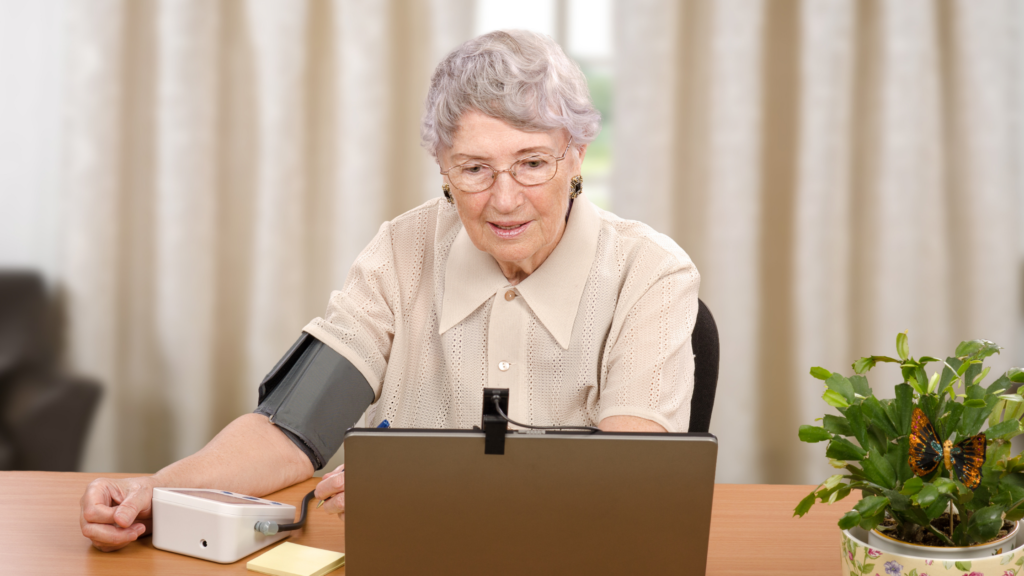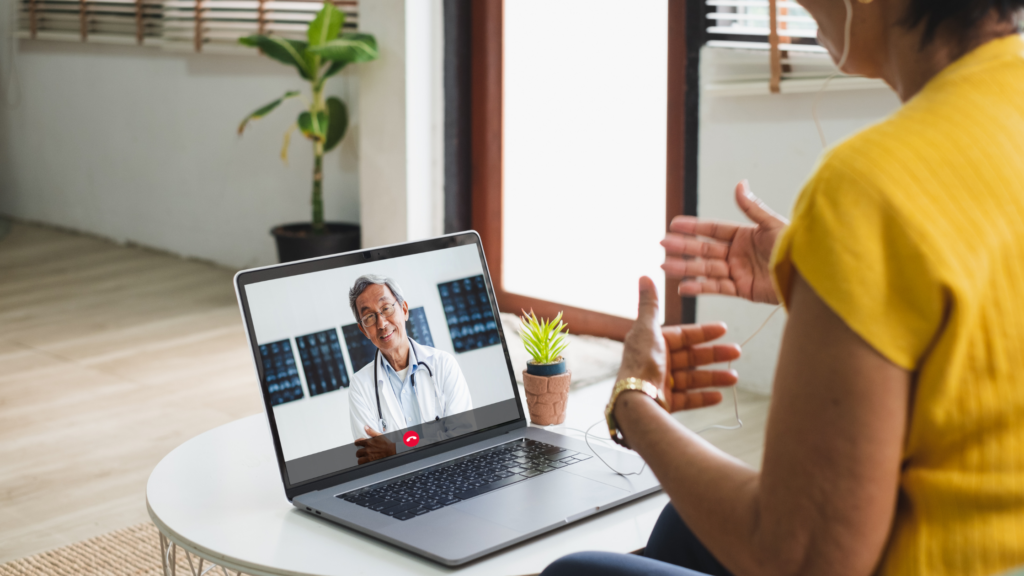Last year I wrote a post about why telehealth is here to stay. Prior to the pandemic, there were still many in healthcare who undervalued the role telehealth would play. But in 2020 we saw removal of regulatory restrictions, less resistance to change, and better understanding by the general public. All of that added up to telehealth – and virtual care as a whole – going mainstream. Now that we are in 2021, it is time to expand this discussion. Now we should include topics like virtual-first care, remote patient monitoring, hospital at home.

Looking Back at Telehealth in 2020
Prior to the pandemic, telehealth was more of a fringe benefit in healthcare. Some of the barriers to adoption sited in the past included:
- Technically challenged staff
- Resistance to change
- Reimbursement
- Age and education of patients
However, the pandemic became a turning point for telehealth. Consumer use rose from 11% in 2019 to 46% in 2020. Removal of regulatory restrictions certainly made telehealth use easier for providers. But, as might be expected in a crisis like this pandemic, both providers and consumers were more adaptable. On top of that, major insurers and CMS supported reimbursement for telehealth with no co-payment required by the consumer.

All of this added up to telehealth going from fringe benefit to mainstream healthcare. Now that telehealth is in the mainstream, the healthcare industry is figuring out the next sets of technologies and approaches.

Virtual-First Care
Even if you never heard of ‘virtual-first care,’ you may still have experienced it. If you had a telehealth visit with a provider before an office visit, then you were in a virtual-first model. The idea behind a ‘virtual-first’ approach is to start with caring for a person virtually. Then you would only move to in-person care when necessary. During the pandemic this was necessary to prevent the spread of the virus. But many organizations and providers are planning to continue this approach moving forward.
Because of the technology available, it is possible to manage an entire episode of care virtually. From medication delivery, to at-home labs, to connected devices like blood pressure cuffs, services that used to be exclusively performed in a healthcare setting can now be performed wherever a person happens to be.

A number of health insurance companies have launched virtual-first health plans. Offered at a discount compared to traditional plans, these plans include things such as:
- 24/7 virtual provider visits with no co-pay
- Virtual primary care that includes home lab visits
- Concierge services that coordinate care across providers
Coming out of the pandemic many may wonder if virtual-first approaches will continue. But given how many healthcare consumers find it convenient, it is very likely this option will be around long-term.

Remote Patient Monitoring
For a number of providers who have mastered telehealth, the next technology to tackle is remote patient monitoring (RPM). Remote patient monitoring uses medical equipment connected to the internet. Common examples are blood pressure cuffs, scales, and blood glucose monitors. These devices gather readings and send them to a software platform used by clinician.

RPM is especially useful for monitoring chronic conditions like high blood pressure, diabetes, and congestive heart failure. The technology can help providers keep watch over a person’s condition in between office visits. It can also help with reaching communities with less medical care, such as rural areas. To decrease health disparities, some point to remote patient monitoring as an option for increasing access to care.
The pandemic gave these tools a boost as providers looked for ways to continue offering care. However, the reimbursement for using these technologies has not been consistent, which dissuades some providers from trying it. Assuming laws are passed that make reimbursement for RPM more consistent in the long-term, we can expect to see these technologies used more frequently.

Hospital-At-Home
Back in May I wrote about how nurses and caregivers can get ready for the expansion of Hospital-At-Home. ‘Hospital-at-home’ is pretty much what it sounds like: an option for services normally provided at a hospital to be provided at home. These services can include things like physical therapy and rehabilitation, infusions, chronic condition treatment, and even chemotherapy.
There are many benefits for patients to be at home, including:
- Closer monitoring by friends and family
- More restful sleep since they control the lights, noise, and sleeping time
- Better food, so they are more likely to eat it and be nourished
- More activity – people tend to be more sedentary in the hospital
Moving care into the home also generates cost savings. One study found hospital-at-home is 38% less costly than traditional hospital care. It also found only 7% of people had readmissions within 30 days, compared to 23% treated in the hospital.

Prompted by the pandemic, government support for high acuity services at home expanded rapidly over the last year. The Centers for Medicare & Medicaid Services (CMS) encouraged more hospitals to offer these services to help increase hospital capacity. This is an expansion of the Hospital Without Walls initiatives they launched in 2020.
The Mayo Clinic and Kaiser Permanente recently announced a joint $100 million investment in Medically Home Group. This is a technology-enabled services company that supports hospital-at-home programs. Medically Home offers technology-enabled services like:
- 24/7 medial command center staffed by clinicians
- Integrated care team in the community who visits patients at home
- Integration with electronic health records
- Required protocols for high-acuity care at home
- Rapid response support
- Monitoring and safety technology integration in the home
We will likely see more technology companies get into this space as hospital-at-home grows in the future.

Key Takeaways:
We have come a long way since telehealth was considered an optional fringe benefit. Telehealth is now a mainstream part of healthcare. Organizations are looking at the next wave of technologies and approaches that take care to the next level. Virtual-first approaches, remote patient monitoring, and hospital-at-home are three areas we can expect to hear more about. These will likely become the new mainstream in the future.

Like this topic? You may have what it takes to be a great Informatics Nurse! Here are two ways to get started:
Option 1: Sign up for Career Coaching! If you would like hands-on help planning your Nursing Informatics career, apply for one of my career coaching packages or book a Coaching Call. Check out my Services page for more information.
Option 2: Check out From Bedside Nurse to Informatics Nurse: A How-To Guide available in our online store.






0 Comments